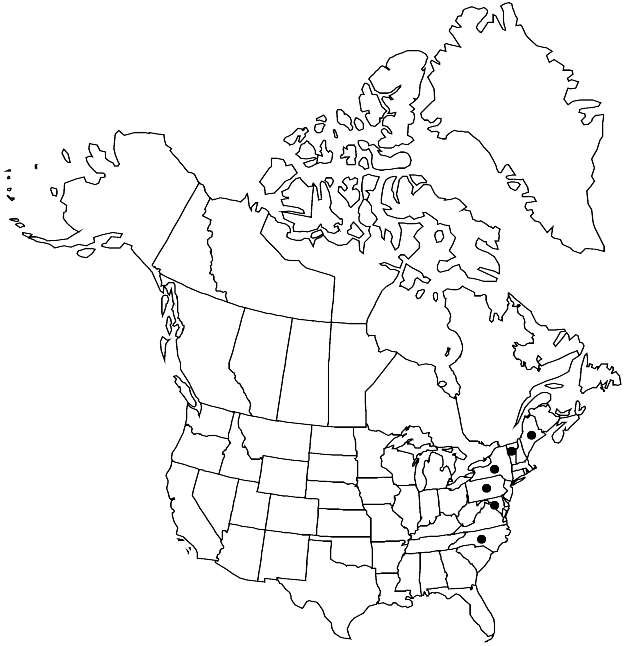Hygrohypnum closteri
Bryologist 13: 14. 1910.
Plants soft, spindly, dirty green. Stems to 15 cm, frequently denuded basally, irregularly branched; hyalodermis absent, epidermal cells small, walls thick, similar to subadjacent cortical cells, central strand well developed. Leaves somewhat erect-spreading, uniformly straight, markedly shrunken and twisted when dry, loosely patent when moist, narrowly ovate, ovate-lanceolate, or lanceolate, plane or rarely weakly concave, (0.3–)0.6–0.9(–1.7) × (0.2–)0.3–0.4(–0.8) mm; margins plane, entire; apex acute; costa usually single to 1/3–1/2 leaf length, much less frequently double and short, or single and 2-fid; alar region usually little differentiated, or cells few, quadrate or short-rectangular; basal laminal cells similar to medial cells or shorter, wider; medial cells fusiform or rhombic, straight or flexuose, sometimes linear-flexuose, (23–)30–50(–63) × (4–)6–7(–13) µm; apical cells shorter; marginal cells rarely longer than 55 µm. Sexual condition autoicous; perigonia and perichaetia occurring individually or in 1- or 2-sexual pairs; perichaetial inner leaves triangular-lanceolate, not plicate, margins plane, costa single. Seta yellowish or yellowish red, 0.7–1 cm. Capsule with endostome cilia 1–3.
Habitat: Irrigated or submerged rock in streams
Elevation: low to moderate elevations (20-1500 m)
Distribution

D.C., Maine, N.Y., N.C., Pa., Vt.
Discussion
Hygrohypnum closteri is so unlike the main body of Hygrohypnum that it is surely ill-placed in the genus; the author and others have noted its Amblystegium-like appearance. The prostrate to somewhat ascending stems have distantly spaced leaves.
Selected References
None.